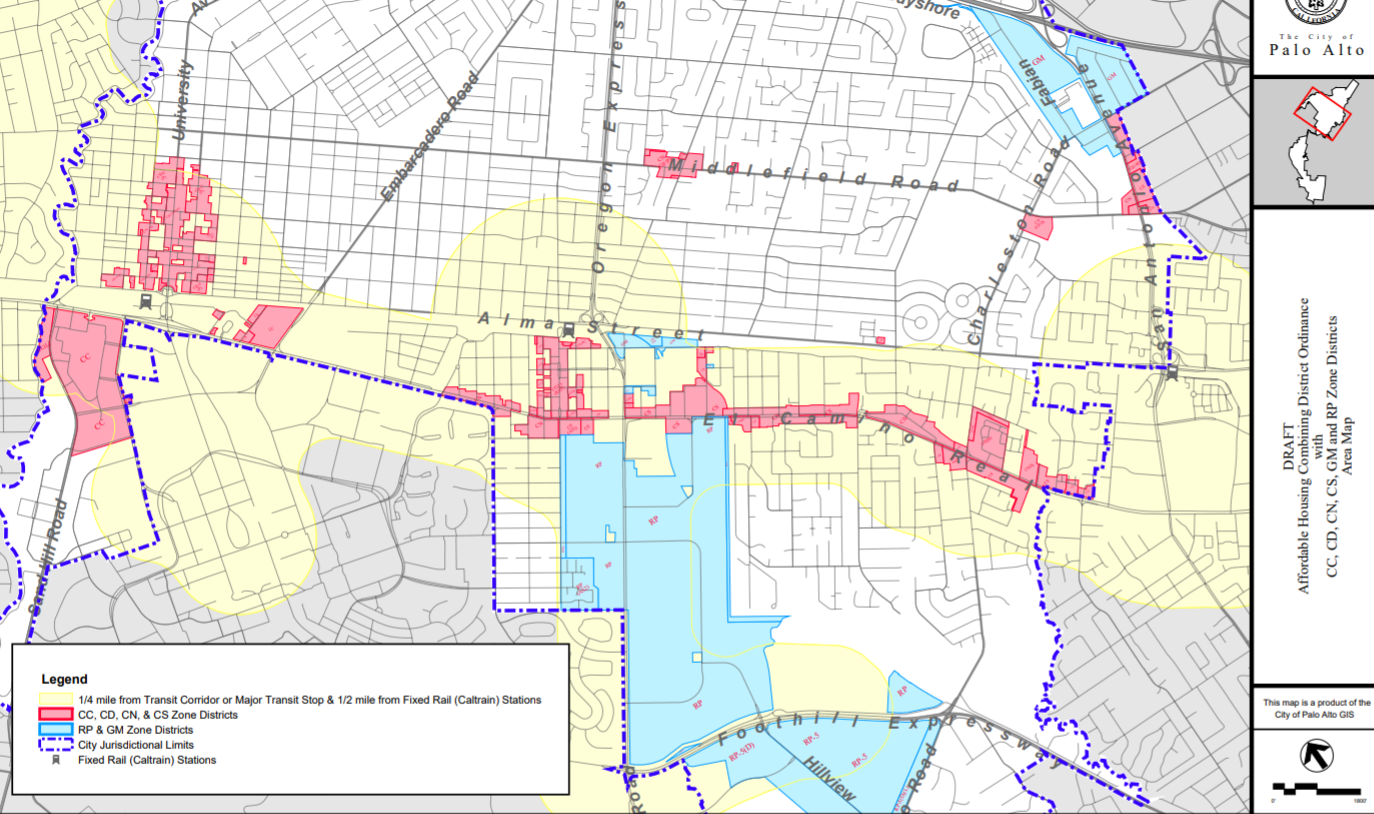On Monday, April 9, the Palo Alto City Council voted to adopt an Affordable Housing Overlay (also known as an Affordable Housing Combining District) Ordinance which will unlock new opportunities for much-needed affordable housing development in Palo Alto. SV@Home applauds the Council for taking bold action to respond to hundreds of community members who called upon them to act immediately. Read SV@Home’s comment letter in support of the Overlay Ordinance.
After nearly five hours of public comment and contentious Council debate, the Council voted 7-2 (with Councilmembers Holman and Kou dissenting). The overlay is the first legislative action taken by Council to implement the solutions it committed to in the City’s 2018 Housing Work Plan.
Check out these slides from Palo Alto City Councilmember Adrian Fine’s April 9th Council Meeting Presentation:
![]()
![]()
Here’s why the Overlay is important:
- It creates the possibility for the development of 100% affordable rental housing in areas near transit that are currently not zoned for residential uses. Because of how affordable housing financing works, most of the homes created are expected to serve low-income households (80% Area Median Income and below), but the Ordinance also allows for the possibility of including homes for moderate income households earning up to 120% AMI.
- It helps make 100% affordable housing development more feasible. By allowing for increased density and heights, lowering parking requirements, and the possibility of Planning Director approval of modifications to a few other requirements that often kill the possibility of development. Developments will still need to apply to be eligible for the overlay and go through other standard steps in the permitting process, but this flexibility is critical, since without these measures, no affordable housing can practically be built.
- It exemplifies the local leadership we need to address the housing crisis. A lot of the barriers to development are out of the City Council’s control, such as state and federal policies and market factors that drive up the cost of development. But the Palo Alto City Council has demonstrated one way that local jurisdictions can do their part in eliminating barriers — a critically important and necessary piece of the puzzle. We are one step closer to creating new affordable housing; there is even one project proposal by Palo Alto Housing that is expected to move forward by applying for use of the Overlay — Wilton Court, which will include a minimum 25% of units for individuals with disabilities.
We thank the many organizations and individuals who brought this victory home through their advocacy, including (but not limited to!) Palo Alto Housing, Palo Alto Forward, and League of Women Voters Palo Alto. As a follow up, the Council voted to explore additional measures that could expand the effectiveness of the ordinance, including expanding the Overlay geography to other zones and the possibility of allowing additional Floor Area Ratio to projects using the Overlay, so this issue will come back to the Council for future discussion. Additionally, several Councilmembers and Planning and Transportation Commissioners signaled support of by-right approval of low-income housing developments — an idea that we strongly support and hope to be agendized soon.
For more information, check out Gennady Sheyner’s coverage at Palo Alto Weekly.

